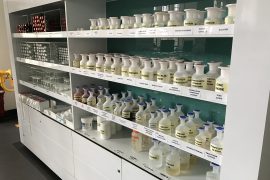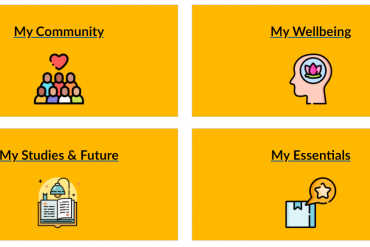In Semester 1 2025 I joined a project in my home area of study, the University of Sydney Business School, to help educators navigate a difficult question that is being asked in higher education: how do we integrate generative AI into teaching and assessment in a way that is both responsible and useful? The project was to explore how generative AI could be responsibly and effectively integrated into assessments and teaching practice. The end goal was to provide practical use cases and guidelines that supported both educators and students in navigating the changing learning environment.
I joined as a student partner, working side by side with educators to capture both the opportunities and challenges AI brings into the classroom. My role was to gather examples of AI implementations from staff, integrate student perspectives, and feed them directly into the design of resources for staff. That meant everything from helping draft frameworks, to pulling together examples of AI-enhanced assessment design, to building a Canvas site where these insights could live. At first the process felt intimidating, but the encouragement and trust of staff partners gave me the space to grow my confidence, turning the experience into a genuine partnership that created real value for everyone involved.
My partnership experience
Working with staff partners one-on-one was initially quite challenging for me. Unlike previous student partner projects where I collaborated alongside other students, this role required me to independently engage with more than ten university educators, each with their own expertise and experiences. As a student, stepping into these spaces, where I was expected to act as a peer rather than a subordinate, sparked intense imposter syndrome during the early stages. It was difficult to reconcile the feeling of power imbalance in my head and I found it difficult to speak with confidence, especially when discussing the integration of generative AI into assessment design, a topic that in many ways challenges traditional pedagogical norms. Many of my collaborators were senior staff members who had spent years learning and teaching their subjects and I felt like I was coming in and challenging the way they had been doing things for years.
The main thing which turned the project from daunting to transformative was the way my staff partner Carmen Vallis approached the process. Right from the beginning, she didn’t hover or supervise. Instead, she would simply send an introductory email connecting me to another educator, and then step back entirely. It was on me to arrange the meeting, to walk into that one-on-one conversation, and to hold my own as an equal partner. At first, that freedom felt overwhelming. Without someone there to back me up, I worried about saying the wrong thing or being dismissed as inexperienced. My imposter syndrome was sharpest in those early meetings, when it was just me and a senior educator in a Zoom meeting.
But over time, something shifted. Part of it was internal, as I began to remind myself that the whole point of student partnership is that my perspective is valuable precisely because it is different from staff expertise. To make things easier, the staff that I met with were not only patient, but genuinely curious. Instead of challenging my right to be there, they leaned in, asked questions, and often thanked me for being candid. That reassurance built slowly, conversation by conversation, until my fear of being found out was replaced by a sense of belonging.
Advice for staff partners
If there is one lesson I would offer to staff, it is this: don’t be afraid to let students take the plunge.Your initial instinct may be to protect students from risks or to hold back ideas until they are fully polished. But in this project, the most valuable moments came when staff gave me space to test, to voice messy thoughts, and even to make mistakes. That freedom didn’t just build my confidence. It created richer, more authentic outcomes than either of us could have predicted.
Some of the best insights in this project came from raw student reflections, not the result of carefully designed frameworks but rather spontaneous, honest contributions that shaped the project in powerful ways.
What students often need most is not direction, but trust. By stepping back a little, staff can allow students to show what they are capable of, even if their path looks different from the one a teacher might have taken. I still remember one focus group where a student made a blunt remark about a widely-used AI tool. On the surface it was a throwaway remark, but its honesty cut through the assumptions we were carrying. That kind of candidness shaped the way we approached our work, reminding us that partnership means being willing to hear, even when it’s uncomfortable, that students’ experiences doesn’t always align with staff expectations.
Restricting students’ ideas, whether by setting narrow boundaries around how they can use AI, or by editing out what feels unpolished, can unintentionally strip away the very creativity and authenticity that partnership is meant to harness. When staff allow students to dive in, even when the outcome is uncertain, it signals that their voices are trusted and their contributions matter. That, more than any polished framework, is what builds true collaboration.
Advice for student partners
For students, my advice is to step into these partnerships with courage. Sitting across from staff who often have been teaching for decades can stir up pressure to sound impressive, to polish every comment into something that feels “worthy” of the conversation. I know I felt it myself at the beginning as I second-guessing every word, wondering if I needed to speak in the language of staff rather than as a student.
But here’s what I learned: staff don’t want rehearsed performances, they want honesty. Some of my most valuable contributions weren’t perfectly framed insights but rough, immediate reactions, like saying outright that a tool “just doesn’t work” or admitting that AI implementation felt more confusing than helpful. Those candid moments sparked real dialogue because they showed staff what students actually experience, not what we think they want to hear.
Over time, I realised that trying too hard to be impressive only creates distance. Authenticity, on the other hand, builds trust. The sooner you let go of the idea that you have to present yourself as more polished than you are, the sooner you’ll find your voice making a real impact.
Find out more about student partnership
- Read about Advaith’s staff partner Carmen’s experience.
- Read about partnering with students to transform teaching and learning
If you’re a University of Sydney Staff member:





